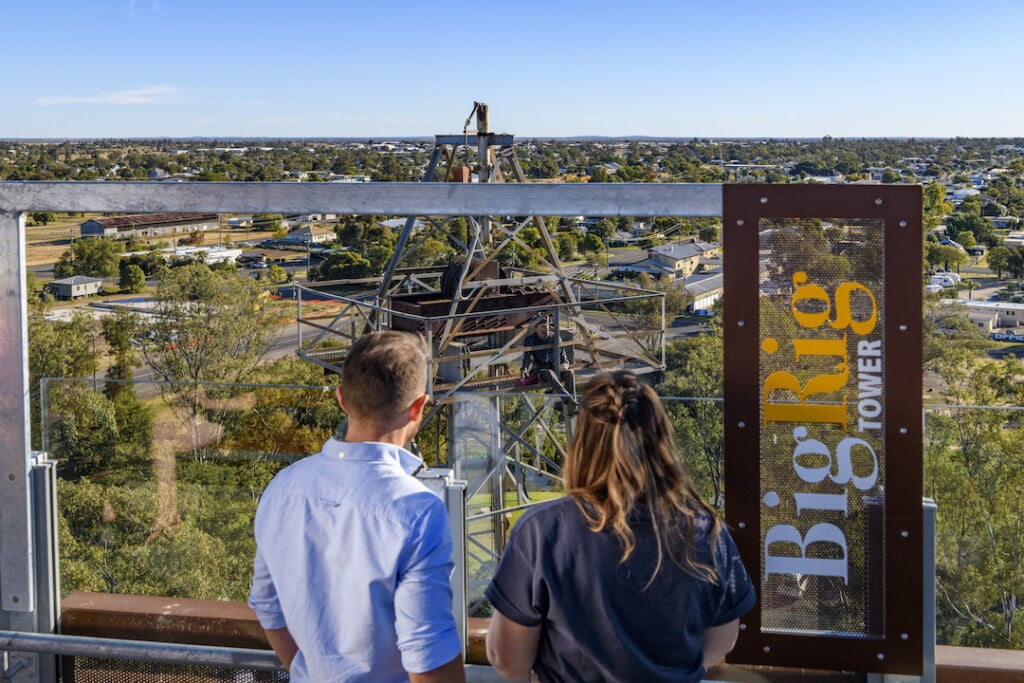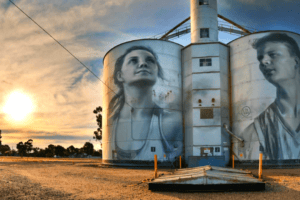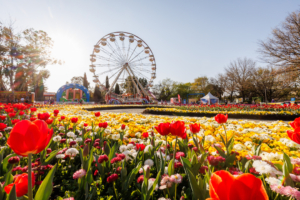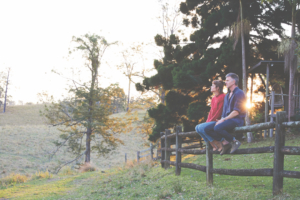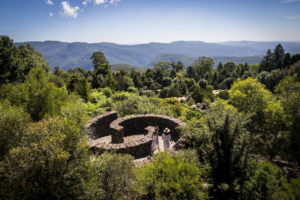Roma has a rich history, warm hospitality and unique attractions – known for its iconic Big Rig and the incredible Bottle trees.
Along with the ever-present natural beauty of the Aussie bush, there’s a good reason why Roma is called the “gateway to the outback.” In fact, no trip to Roma is truly complete unless you’ve taken a selfie with both of the town’s iconic attractions.
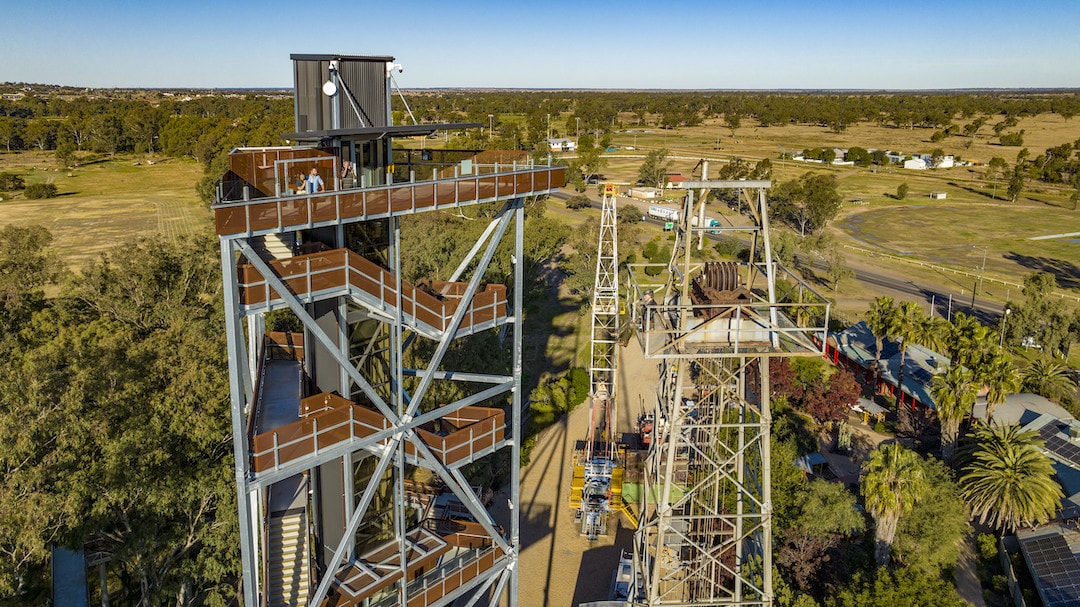
The Big Rig
A visit to the industrial landmark, the Big Rig offers a unique glimpse into the nation’s pioneering past as testament to Roma’s significant role in Australia’s oil and gas industry. As you step back in time, the Big Rig takes you on an immersive journey through the history of petroleum extraction and the people who shaped the industry.
The story of The Big Rig dates back to the early 20th century when the first natural gas discovery was made in Roma. As the region’s gas and oil industry began to flourish, The Big Rig evolved into a central hub for the processing and distribution of these precious resources.
For decades, it played a crucial role in powering the nation and driving the economy forward. Eventually, technological advancements rendered The Big Rig obsolete, leading to its transformation into a fascinating museum that preserves the legacy of the petroleum and gas industry.
Begin your visit at the Oil Patch Museum, where you’ll find a unique collection of machinery, drills, and equipment that tell the tale of early drilling endeavours. The local guides, often former rig workers themselves, provide insightful anecdotes and stories of life on the rigs.
As the sun sets, the Oil Patch comes alive with a mesmerising sound and light show, where a presentation brings the history of Roma’s oil and gas industry to life. You’ll learn about the struggles and triumphs of the pioneers who toiled to extract the region’s liquid gold. The 35-minute sound and light journey is a fun and educational evening for all.
Don’t miss the chance to visit the Vintage Wall of Fame, which celebrates the contributions of those who worked in the industry.
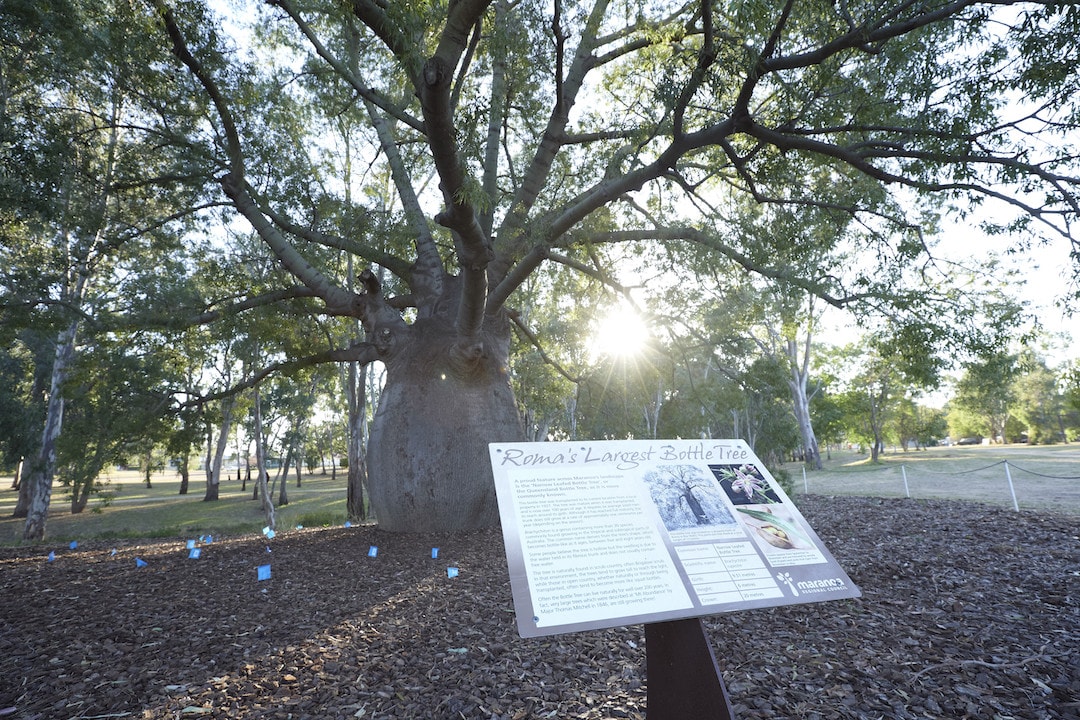
Bottle trees
Standing proudly and gracefully, the Bottle trees of Roma are seen as living sculptures that have become an iconic symbol of the town. The Bottle tree (not to be confused with the Boab tree) is aptly named for its distinctive trunks.
The Bottle tree belongs to the species brachychiton rupestris, and their remarkable appearance is the result of their bulbous and swollen trunks, resembling the shape of antique glass bottles. These magnificent trees can grow up to nine metres and boast lush green canopies, providing much-needed shade in the scorching outback.
Bottle trees were first recorded by explorer Major Mitchell in 1846 and some believe that those very trees recorded back then are still alive today.
Tale a walk along the Heroes Avenue of 93 Bottle trees, a touching memorial to the men who lost their lives during World War I. The first tree was planted in 1918 in memory of Lieutenant Corporal Norman Saunders, who died during WW1 in France in 1916. This symbolic tree, located near the Roma post office, at the corner of McDowell and Wyndham streets, has come to be known as the “Tree of Knowledge.”
As the avenue took shape, more trees were planted, stretching from the railway station into Wyndham Street and along Bungil Street to the intersection with Hawthorne Street. By 1920, the Heroes Avenue stood proudly, lined with majestic bottle trees, each one carrying a brass nameplate to honour the fallen.
A cenotaph was unveiled in 1938, in Roma’s Queen’s Park, which also honours the WWI fatalities that devastated the town, and more recently the names of 39 men who died in WWII were also added to the list of the lost men that the town lovingly remembers.
Roma’s biggest Bottle tree has a girth of 9.62 metres, a height of 15 metres and a crown of 23 metres. It was originally planted back in the late 1800s on a rural property but, in 1927 it was transplanted to its current place in town where it has become a popular tourist attraction. You’ll find this tree at the end of Edwardes Street, Roma.
For more to explore in the rich Outback town of Roma, click here!

